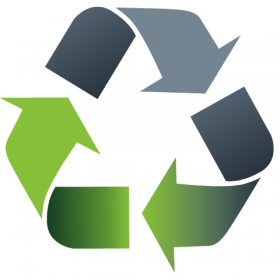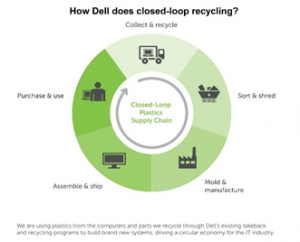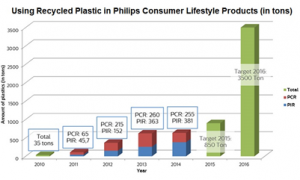How are current businesses tailoring plastic waste into the circular economy?

The 21st century resulted in a widespread use of technology, and one of the greatest challenges that left us was the electronic waste (e-waste) (Vélez, 2010). According to United Nations University report, less than one-sixth of Global E-waste has been recycled and reused in the year 2014 (Baldé, Wange, Kuehr, & Huisman, 2015). Something harmful to the ecosystem, since the various component shaping the electronic equipment’s can be highly contaminating.
Among e-waste components, 45 percent can be ferrous metals, 22 percent plastics, 10 percent non-ferrous metals and 9 percent glass (Ficeriová, Baláz, Dutková, & Eberhard, 2008). With the aim of reducing the plastic waste, strict international norms have been developed to guarantee its proper handle and disposal. However, adopt circular economy principles can capture much more value than the traditional take-make-dispose system (De Angelis, 2016) in the plastic industry. Circular economy propose maximize the product value over its entire cycle with creative solutions that can switch the design, supply chain, and even the complete business model of a company (Ying & Li-jun, 2012).
Since complex issues demand comprehensive global solutions, cross-functional collaboration and eco-design are current practices that companies like Dell and Philips are implementing as productive closing loops practices. In the case of Dell, the company is not only reducing the need for virgin materials with their OptiPlex 3030 All-in-One Computer (Mihai, 2016), but it is also offering an 11 percent reduction in carbon dioxide emissions compared with other similar products sold globally. Today, this electronic manufacture keeps committed to moving the issue forward, engaging constantly their employees, suppliers and customers in the closed-loop recycling concept.
Source: illustration from Dell Website, 2016
Another example of circular economy business model implementation is Philips. The brand works with clear goals to ensure that plastic components become less dependent on original materials. Additionally, to minimize environmental impacts, the company is participating with the Ellen MacArthur Foundation and a dynamic group of companies since 2015 on a project that seeks Master thesis students in order to develop new ways of recycling and reuse plastics.
Source. Figure from Philips Website, 2016
Build a circular economy remains a major challenge for many manufacturers and recyclers in the waste stream due to the fact that sorting plastics components still yet a complex and expensive process (Peeters, Vanegas, Tange, Van Houwelingen, & Duflou, 2014). Hence, close cooperation between them and regulatory organizations can create new opportunities and benefits from an economic and environmental approach that will improve product identification and disassembly.
References
Baldé, C. P., Wange, F., Kuehr, R., & Huisman, J. (2015). The global e-waste monitor. Bonn, Germany: United Nations University – IAS – SCYCLE.
De Angelis, R. (2016). A Conceptualisation of Circular Business Models and Explanation of Their Adoption: Evidence From Four In-Depth Case Studies.
Ficeriová, J., Baláz, P., Dutková, E., & Eberhard, G. (2008). Leaching of Gold and Silver from Crushed Au-Ag Wastes. The Open Chemical Engineering Journal,
Mihai, F. C. (2016). E-Waste in Transition: From Pollution to Resource (Florin-Constantin Mihai). Croatia: InTech.
Peeters, J. R., Vanegas, P., Tange, L., Van Houwelingen, J., & Duflou, J. R. (2014). Closed loop recycling of plastics containing Flame Retardants. Resources, Conservation and Recycling, 84, 35–43.
Vélez, P. A. (2010). E-WASTE: la basura del siglo XXI, ¿Qué hacer con ella? Scientia et Technica, 3(46), 169–174.
Ying, J., & Li-jun, Z. (2012). Study on Green Supply Chain Management Based on Circular Economy. Physics Procedia, 25, 1682–1688.


